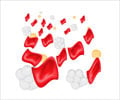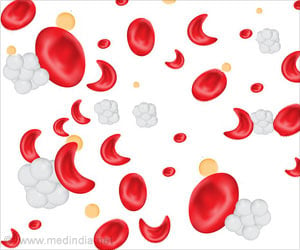Highlights
- Thalassemia is the world’s largest rare disease group globally, with India termed the “Thalassemia capital”
- Several years of research has finally led to progressive gene therapy trials across the world to correct the defective beta-globin gene
- Gene therapy is the final curative for thalassemia
Thalassemia is an inherited, autosomal-recessive blood disorder affecting the production of normal hemoglobin within the body. A child inherits thalassemia from both the parents who are carriers (who carry the thalassemia gene but are healthy). The child inheriting the two defective genes is termed “thalassemia major” where he/she will not be able to produce sufficient quantity of hemoglobin thereby requiring lifelong blood transfusions, iron chelation and other therapies to stay alive. The only available cure at present is a matched bone marrow transplant usually done within 10 years of age. The most common genotype of thalassemia is Beta-thalassemia. Alpha and Delta-Beta occur infrequently in any given ethnic group. According to the World Bank Report, 2006 around 7% of the world population is a carrier of hemoglobin disorders. Every year, anywhere between 300,000 to 500,000 children are born with a severe hemoglobin disorder and 80% of these are in low and middle income countries. Every year 50,000 – 100,000 children with Beta-thalassemia major die in low and middle income countries. In India, 10,000 thalassemia major babies are born every year. There are 35 million carriers in India with more than 100,000 plus thalassemia majors dependent on fortnightly or monthly blood transfusions for survival. Till date, there has been little or no intervention from the national government or its health agencies in formulating a “National Thalassemia Plan” for prevention, control, care and cure strategies. The figures are alarming enough for the government to sit up and take notice, and create a strategic action plan before India goes on to become a 100% carrier population like Maldives, Mauritius, Iran or Iraq.
World Thalassemia Day is a platform created by the Thalassemia International Federation, Cyprus to provide a channel for patients, families, doctors, researchers and other healthcare personnel to share their experiences and knowledge of thalassemia. This day is a critical platform to “make noise” and awaken the public, government and media to the realities of thalassemia and the necessity to act on this disease.
Thalassemia day involves a range of activities globally with different patient support organizations hosting conferences, care clinics, CMEs for doctors and fun activities for patients and families. Fun activities for patients usually indicate an opportunity to let parents get away from the medicalized life and let down their hair for a day. It is a time to connect with others and know that one is not alone in this fight and journey. For example, the National Thalassemia Society, Delhi, is hosting the Kutle Khan project in a fun night. The Kutle Khan project refers to a group of Rajasthani folk singers; the idea of a fun night with music is all about avoiding the “medicalization” of thalassemia and entertaining children and adults. Similarly, the Prathama Thalassemia Initiative in Ahmedabad has arranged a “Walk Rally” on the day starting from the riverfront on Ashram road. The idea is to involve everybody including the general public to join the walk and support the cause. A walk rally brings together people from different walks of life and creates a degree of public awareness on a major genetic disorder.
The Department of Pediatrics, Dayanand Medical College and Hospital at Ludhiana has extended support to its thalassemia patients by collaborating with the Punjab Thalassemic’s Welfare Society to host a day-long event with informative talks, session on yoga for thalassemia, diet and sharing of inspirational stories. These events are holistic and enable patients to get the latest clinical updates as well as understand better care strategies.
In India, there are nearly 65 registered thalassemia societies working for the welfare of people with thalassemia. Most of these societies hold events on thalassemia day since it creates a sense of belonging among patients and families. This day is also significant as it provides a chance to take stock and review the current situation of thalassemia, and the possibility of future therapies.
In such a scenario, India too needs to stir and consider the possibility of developing clinical research for gene therapeutics. The national ministry of health and its agencies need to create a country-wide registry to confirm the exact number of thalassemia major patients so that the viability of investing in clinical research in gene therapies can be considered. Given the fact that India has capable doctors, medical researchers and a robust biotech ecosystem, it is not entirely impossible to pursue such a program. This is the need of the hour in India on the eve of World Thalassemia Day 2017 besides a national program to prevent and control the spread of thalassemia.
- Thalassaemia International Federation - (https://www.thalassaemia.org.cy/)
- Thalassemics India Giving Hope a New Meaning - (http://www.thalassemicsindia.org/index.php)
- American Society of Hematology - (http://www.hematology.org/Newsroom/Press-Releases/2015/4742.aspx)
Source-Medindia










